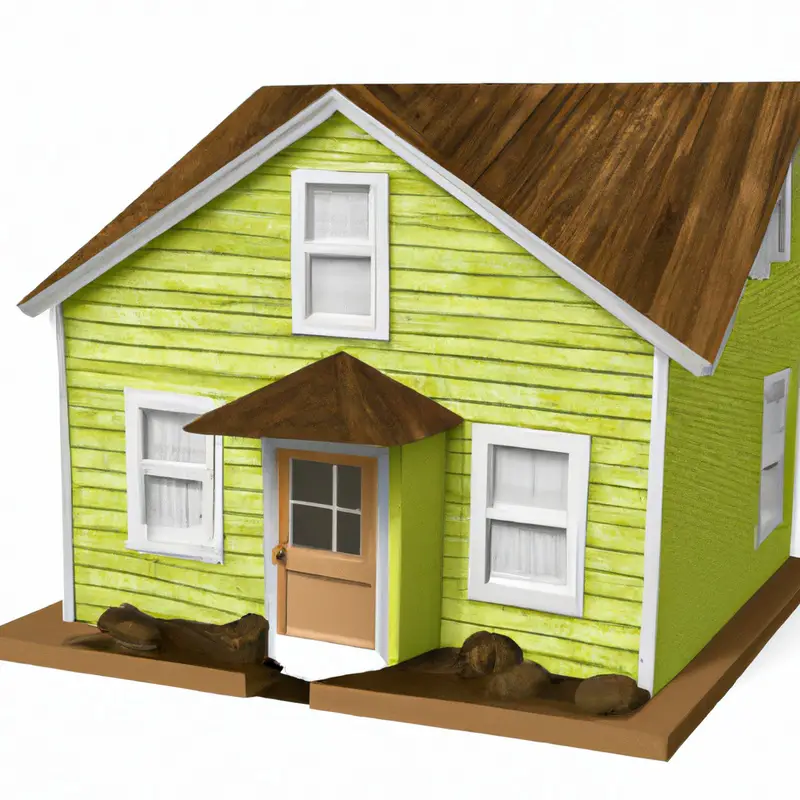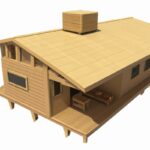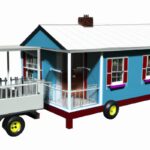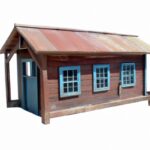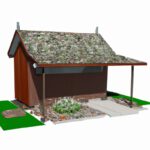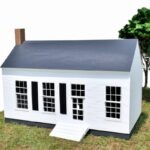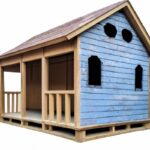Key Takeaways:
- Assess your belongings critically and prioritize what is essential versus what can be let go.
- Utilize storage solutions that maximize space and reduce clutter.
- Adopt a minimalistic mindset to prevent future accumulation of unnecessary items.
- Embrace the freedom and simplicity that comes with downsizing to a Tiny House lifestyle.
Are you tired of feeling weighed down by clutter and the expenses of a larger living space? Do you dream of a simpler, more sustainable lifestyle?
If so, it may be time to consider downsizing to a tiny house.
In this blog article, I will guide you through the process of downsizing and decluttering, helping you embrace the benefits of a tiny house lifestyle. We’ll explore the financial freedom, environmental sustainability, and minimalistic living that comes with living in a smaller space.
From assessing your needs to organizing and storing possessions, I’ll provide you with practical tips and strategies to make the transition smooth and successful.
So, let’s dive in and discover the joy of living large in a tiny house!
Step |
Actions |
|---|---|
1. |
Assess your current possessions |
2. |
Sort items into keep, donate/sell, and discard piles |
3. |
Donate or sell items you no longer need |
4. |
Maximize storage space with organizational tools |
5. |
Digitize physical documents and photos |
6. |
Optimize furniture choices for multi-functional use |
7. |
Practice mindful shopping and avoid unnecessary purchases |
8. |
Regularly reassess and declutter to maintain a minimalist lifestyle |
Benefits of a Tiny House Lifestyle
Financial Freedom
Financial freedom is one of the key benefits of a tiny house lifestyle. With lower costs for purchasing or renting a tiny house, as well as reduced utility bills and maintenance expenses, you can save a significant amount of money.
This allows you to have more financial flexibility, pay off debts, and even pursue your passions or travel.
Additionally, downsizing and decluttering can help you prioritize your spending, avoid unnecessary purchases, and live a more intentional and fulfilling life.
Environmental Sustainability
Environmental sustainability is a crucial aspect of the tiny house lifestyle.
With limited space and resources, it encourages individuals to be more mindful of their consumption and waste.
By minimizing their ecological footprint, tiny house dwellers contribute to a healthier planet.
They can achieve this by using eco-friendly materials, implementing energy-efficient systems, and reducing reliance on non-renewable resources.
Additionally, living in a tiny house often encourages individuals to explore alternative and sustainable practices such as composting, rainwater harvesting, and renewable energy sources.
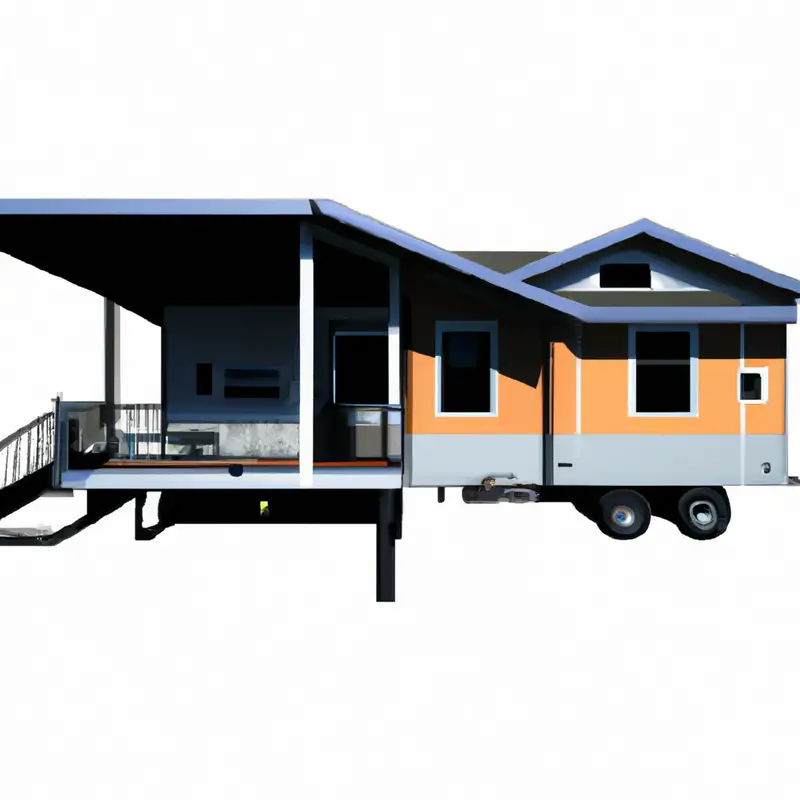
Minimalistic Living
Minimalistic living is all about simplifying your life and focusing on what truly matters.
It means intentionally choosing to live with less, both in terms of material possessions and unnecessary commitments.
By adopting a minimalistic lifestyle, you can free yourself from the burden of excess stuff and create more space for what brings you joy and fulfillment.
It’s about finding contentment in owning less and valuing experiences over possessions.
Embracing minimalism can lead to a more peaceful, organized, and purposeful life.
Assessing Your Needs and Priorities
Evaluating Space Requirements
When evaluating space requirements for a tiny house, it’s important to consider your needs and priorities.
Assess how much living space you truly require and what activities you’ll be doing in your home.
Consider the number of occupants, storage needs, and any essential furniture or appliances.
Keep in mind that smaller spaces require careful planning and efficient use of every inch.
So, be realistic about what you truly need and be prepared to let go of unnecessary items.
This will help ensure that your tiny house is comfortable and functional for your lifestyle.
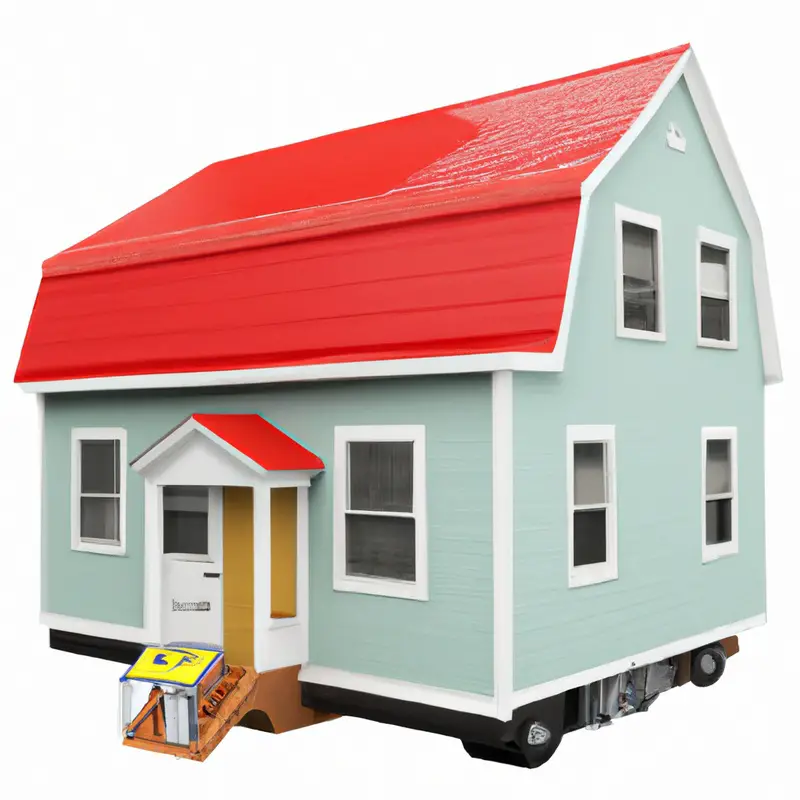
Determining Essential Items
Determining essential items is a key step in downsizing for a Tiny House lifestyle. Start by considering your daily needs and activities.
What items do you use regularly?
Identify those that serve multiple purposes and can be used in different areas of your home. Take inventory of your belongings and prioritize what is truly necessary.
Remember, downsizing doesn’t mean getting rid of everything, but rather focusing on what adds value and functionality to your life.
Once you have determined your essential items, you can create a plan to declutter and organize your space effectively.
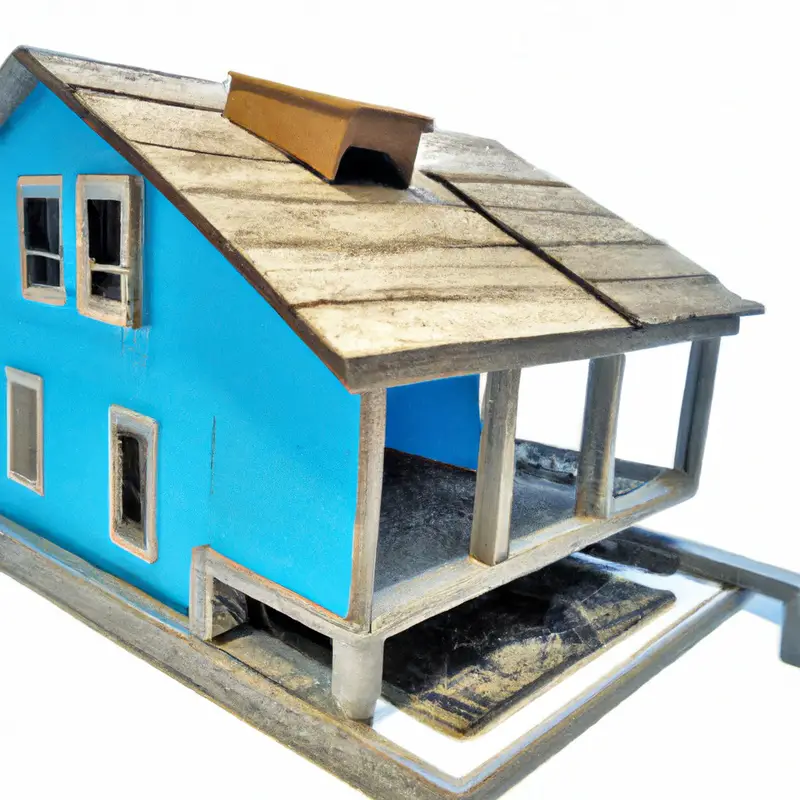
Identifying Long-Term Goals
Identifying long-term goals is a crucial aspect of downsizing and decluttering for a Tiny House lifestyle.
Think about what you want to achieve by living in a smaller space.
Are you aiming for financial freedom, environmental sustainability, or a more minimalistic lifestyle?
Consider your priorities and what truly matters to you.
Identifying your long-term goals will help guide your decision-making process and ensure that you stay focused on what is important to you throughout the downsizing journey.
Planning the Downsize
Creating a Sorting System
When it’s time to downsize and declutter for a Tiny House lifestyle, creating a sorting system is key.
Here’s how to get started:
- Categorize your belongings into groups based on functionality and importance. For example, you can have categories like “Essentials,” “Sentimental Items,” “Donatable,” and “Trash.”
- Use labels and color-coded bins to easily identify each category. This way, you’ll know exactly where everything belongs.
- Prioritize items that you use frequently or that have sentimental value. These should be kept within reach and easily accessible in your new tiny space.
- Consider using a digital inventory to keep track of your belongings. This can help you easily locate items in the future and prevent unnecessary duplication.
Remember, creating a sorting system is a crucial step in the downsizing process.
By categorizing and organizing your belongings, you’ll be able to make informed decisions about what to keep, donate, or discard.
Setting Realistic Goals
When setting realistic goals for downsizing and decluttering, it’s important to be practical and consider your individual needs.
Assess your available space and prioritize the essentials.
Think about your long-term goals and what you truly value.
Create a clear sorting system to help you make decisions.
Seek professional assistance if needed.
By setting realistic goals, you can achieve a successful downsizing and embrace the freedom of a simpler lifestyle.
Seeking Professional Assistance
Seeking professional assistance can greatly simplify the downsizing and decluttering process for a Tiny House lifestyle. A professional organizer or decluttering expert can offer valuable guidance and support throughout the process.
They can help create an effective sorting system, set realistic goals, and provide practical solutions for organizing and storing possessions.
Additionally, professional assistance can help you navigate the emotional aspects of letting go of sentimental items. Consider reaching out to professionals who specialize in decluttering and downsizing to make the transition smoother.
Decluttering Strategies
The KonMari Method
The KonMari Method is a popular decluttering technique created by Marie Kondo. It involves organizing belongings by category and keeping only items that spark joy.
The method encourages individuals to consider their emotional attachment to possessions and discard those that no longer serve them.
By focusing on what truly brings happiness, the KonMari Method helps create a clutter-free and harmonious living space.
The Four Box Technique
The Four Box Technique is a simple yet effective strategy for decluttering and downsizing your belongings. Here’s how it works: Grab four boxes or bins and label them as “Keep,” “Donate/Sell,” “Trash,” and “Storage.” Then, go through each item in your home and place it into one of the boxes based on its usefulness and relevance to your life.
The “Keep” box is for essential items, while the “Donate/Sell” box is for things you no longer need but could benefit someone else.
The “Trash” box is for items that are no longer usable, and the “Storage” box is for belongings that you want to keep but don’t need immediate access to. This technique helps you make quick, decisive decisions about your possessions, allowing you to create a more organized and clutter-free space.
Digital Decluttering
Digital decluttering involves organizing and streamlining your digital files and devices.
It’s important to regularly clean up and organize your digital spaces to improve productivity and reduce stress.
Here are some tips for digital decluttering:
- Sort and Delete: Start by organizing your files into folders and deleting anything you no longer need. Be ruthless in getting rid of unnecessary documents, photos, and apps.
- Backup and Archive: Backup important files and photos to an external hard drive or cloud storage. Consider archiving older files that you don’t frequently access to free up space.
- Clear Out Email: Delete old emails and unsubscribe from newsletters you no longer read. Create filters to automatically organize incoming emails into folders.
- Manage Apps and Software: Delete unused apps and software from your devices and uninstall browser extensions you don’t need. Keep only the essentials to minimize clutter.
- Streamline Digital Subscriptions: Assess your digital subscriptions and cancel those you no longer use or find value in. This will help reduce expenses and simplify your digital life.
Remember, digital decluttering is an ongoing process.
Regularly set aside time to tidy up your digital spaces and maintain a clutter-free digital environment.
Organizing and Storing Possessions
Maximizing Vertical Space
To maximize vertical space in a tiny house, think vertically! Utilize tall shelves, wall-mounted hooks, and hanging organizers to make the most of your walls. Opt for furniture with built-in storage, such as platform beds or ottomans with hidden compartments.
Consider installing floating shelves or stacking bins to keep items organized and easily accessible.
Use your ceiling space by hanging pots and pans or installing a loft for additional storage or living space. Get creative and find ways to utilize every inch of your walls and ceilings to create a clutter-free and functional tiny home.
Utilizing Multi-Purpose Furniture
One of the key strategies for maximizing space in a tiny house is to utilize multi-purpose furniture. These versatile pieces not only provide a functional purpose but also help you save valuable space.
For example, a sofa that can be converted into a bed is perfect for accommodating guests without the need for an extra bedroom.
Similarly, a coffee table with built-in storage compartments can serve as both a surface for drinks and a place to store books or blankets. By opting for multi-purpose furniture, you can make the most of every square inch in your tiny house.
Implementing Storage Solutions
Implementing storage solutions in a tiny house is essential to maintain an organized and clutter-free living space.
Utilize vertical space by installing shelves or hooks on walls for items such as books, utensils, or clothing.
Opt for multi-purpose furniture like ottomans with hidden storage compartments or beds with drawers underneath.
Additionally, consider using storage bins or baskets to categorize and store smaller items.
By maximizing every available space, you can ensure a functional and efficient living environment in your tiny house.
Selling, Donating, and Recycling
Selling Unwanted Belongings
When downsizing for a tiny house lifestyle, selling unwanted belongings can help you reduce clutter and make some extra money.
Start by assessing which items you no longer need or use.
Take clear and appealing photos of your items and list them on online platforms or local classifieds.
Be realistic with pricing and consider negotiating.
Alternatively, you can host a garage sale to sell multiple items at once.
Selling unwanted belongings helps you declutter your space and recoup some of your investment.
Donating to Charities
Donating to charities is a great way to downsize and declutter your belongings. It not only helps you clear out space in your tiny house, but also allows you to make a positive impact in your community.
When donating, choose reputable charities that accept the items you want to give away.
Some charities may even offer pick-up services, making the process easier for you. Remember to check if your donations are tax-deductible and keep receipts for your records.
By donating, you can declutter with purpose and contribute to a worthy cause.
Mental and Emotional Preparation
Letting Go of Emotional Attachments
Letting go of emotional attachments can be challenging, but it’s an essential part of downsizing for a Tiny House lifestyle. Here are a few tips to help you through the process:
- Take your time: Emotions may arise as you sort through your belongings. Give yourself permission to feel and process these emotions.
- Reflect on the memories: Understand that you don’t have to let go of the memories associated with an item. You can hold onto the sentimental value without keeping the physical object.
- Prioritize what matters most: Focus on keeping items that align with your values and contribute to your desired lifestyle. Consider what truly brings you joy and fulfillment.
- Share with loved ones: If there are items that hold sentimental value for you but don’t serve a purpose in your Tiny House, consider passing them on to a family member or friend who will cherish them.
Remember, downsizing is about simplifying and creating a space that reflects your priorities and goals. Letting go of emotional attachments can be liberating and make room for new experiences in your Tiny House lifestyle.
Coping with Sentimental Items
Coping with sentimental items can be one of the most challenging aspects of downsizing and decluttering. It’s important to remember that memories are not tied to physical objects.
One strategy is to take photos of sentimental items and create a digital album.
Another is to choose a few special items to keep and display, while finding ways to let go of the rest. Donating sentimental items to loved ones or finding a new home for them can also provide a sense of closure.
It’s all about finding a balance between keeping what truly matters and embracing the freedom of simplicity.
Embracing the Freedom of Simplicity
Embracing the freedom of simplicity is liberating.
It’s about letting go of material possessions and focusing on what truly brings joy and fulfillment to our lives.
Living with less allows us to appreciate the things that matter most, such as relationships, experiences, and personal growth.
Simplifying our lives can reduce stress, increase clarity, and create more time and energy for what truly matters.
It’s a journey of self-discovery and finding contentment in the little things.
By embracing simplicity, we can enjoy a more intentional and meaningful existence.
Maintaining a Clutter-Free Lifestyle
Establishing New Habits
Establishing new habits is key to maintaining a clutter-free lifestyle in a tiny house.
One habit to develop is regularly decluttering and organizing belongings.
Set aside dedicated time each week to go through your items and decide what to keep or let go.
Another habit is practicing minimalism by only acquiring things that are necessary and bring you joy.
Lastly, make it a habit to clean and tidy up your tiny house on a regular basis to prevent clutter from accumulating.
These habits will help you maintain a spacious and organized living environment.
Regular Cleaning and Maintenance
Regular cleaning and maintenance are essential for a clutter-free lifestyle in a tiny house.
I make it a habit to clean and tidy up my space regularly to prevent the accumulation of dust and dirt.
I also set aside time for routine maintenance tasks, such as checking for leaks, replacing air filters, and organizing my belongings.
These small efforts go a long way in keeping my tiny house clean, functional, and enjoyable to live in.
Plus, it helps me stay on top of any repairs or maintenance issues that may arise.
Avoiding Impulse Purchases
Avoiding impulse purchases is key to maintaining a clutter-free lifestyle in a tiny house.
To resist the temptation, I recommend making a shopping list before going to the store and sticking to it.
Additionally, consider waiting 24 hours before making a purchase to determine if it’s something you truly need.
Another helpful tip is to unsubscribe from marketing emails and limit your exposure to advertisements.
By being mindful of your spending habits, you can save money and prevent unnecessary clutter from entering your home.
Tips for Living Comfortably in a Tiny House
Creating Functional Spaces
When creating functional spaces in a tiny house, maximizing every inch is key.
Here are a few tips to make the most of your limited space:
- Use multi-functional furniture: Look for pieces that serve multiple purposes, like a sofa that can transform into a bed, or a coffee table with hidden storage compartments.
- Utilize vertical space: Install shelves, hooks, and hanging organizers on walls to free up floor space. Vertical storage solutions can hold books, kitchen supplies, or even clothes.
- Create designated zones: Dividing your space into different areas can help organize your tiny home. Use rugs, curtains, or furniture placement to create distinct zones for sleeping, working, and relaxing.
- Think outside the house: Take advantage of outdoor areas like decks, balconies, or patios to extend your living space. Add comfortable seating, plants, and lighting to create an outdoor oasis.
Remember, the key is to find creative solutions that fit your lifestyle and make everyday living in a tiny house comfortable and enjoyable.
Utilizing Outdoor Areas
Utilizing outdoor areas is essential in maximizing the space and comfort of a tiny house. Outdoor areas can serve as extensions of your living space and provide additional room for activities and relaxation.
Here are some ideas for making the most of your outdoor spaces:
- Create a functional outdoor living area with comfortable seating, tables, and shade options such as umbrellas or awnings.
- Utilize vertical space by installing wall-mounted planters, shelves, or hooks for hanging plants and decor.
- Incorporate a small garden or herb bed to grow your own fresh produce.
- Set up a compact grill or portable kitchenette for outdoor cooking and dining.
- Install storage solutions such as outdoor cabinets or sheds to keep your outdoor equipment organized.
- Consider adding a small deck or patio for entertaining guests or simply enjoying the outdoors.
- Optimize natural light by strategically placing windows and skylights to brighten up your tiny house interior.
By making use of these outdoor areas, you can enhance the functionality and enjoyment of your tiny house lifestyle.
Incorporating Natural Light
Incorporating natural light is key to creating a bright and airy atmosphere in your tiny house. Here are some tips to maximize the amount of natural light in your space:
- Install large windows: Opt for larger windows to allow more natural light to enter the room. Consider placing them strategically to capture the most sunlight throughout the day.
- Use light-colored, reflective surfaces: Choose light-colored walls, floors, and furniture to help bounce and distribute light throughout the space. Mirrors can also help reflect and amplify natural light in a room.
- Avoid heavy window treatments: Opt for light and sheer curtains or blinds that allow plenty of natural light to filter through. Avoid heavy drapes that block out light.
- Incorporate skylights or sun tunnels: If possible, consider adding skylights or sun tunnels to bring in more natural light from above. These can be particularly effective in rooms with limited wall space for windows.
- Keep windows unobstructed: Arrange furniture and decor in a way that does not block the flow of natural light from windows. This will help maximize the amount of light that enters the room.
By incorporating these strategies, you can create a bright and welcoming environment in your tiny house, making it feel more spacious and enjoyable to live in.
Embracing the Benefits of Downsizing
Increased Mobility and Flexibility
Increased mobility and flexibility are key benefits of downsizing to a tiny house. With fewer belongings and a smaller living space, you have the freedom to easily relocate and explore new opportunities.
Whether you want to travel, live in different cities, or simply change your surroundings, a tiny house allows you to do so without the burden of a large home.
Plus, the smaller footprint of a tiny house enables you to adapt to different environments and make the most of limited space.
Quality of Life Improvements
Quality of life improvements are a major benefit of downsizing and decluttering for a Tiny House lifestyle. With fewer possessions and a simplified living space, you can experience a sense of lightness and freedom.
You’ll spend less time cleaning, organizing, and maintaining your living environment, allowing more time for activities and experiences that truly bring you joy.
In a Tiny House, you can focus on what truly matters to you, leading to a more fulfilled and balanced life.
Reducing Carbon Footprint
Reducing your carbon footprint is a key aspect of downsizing and living in a tiny house.
Here are some simple strategies to help you minimize your impact on the environment:
- Use energy-efficient appliances and LED lighting to reduce electricity consumption.
- Install insulation and weatherstripping to make your home more energy-efficient.
- Opt for renewable energy sources like solar panels or wind turbines.
- Compost food waste instead of sending it to the landfill.
- Choose sustainable and eco-friendly building materials.
- Reduce water consumption by installing low-flow fixtures and collecting rainwater.
- Adopt a minimalist lifestyle and only buy what you truly need.
- Bike, walk, or use public transportation instead of relying on a car.
- Plant trees and create a small garden to absorb carbon dioxide.
By making these small changes, you can significantly reduce your carbon footprint and contribute to a greener, more sustainable future.
Final Verdict
Downsizing and decluttering for a tiny house lifestyle offers numerous benefits, such as financial freedom, environmental sustainability, and a minimalist way of living.
Assessing your needs and priorities, planning the downsize, and implementing effective decluttering strategies are essential steps in this process.
Selling, donating, and recycling unwanted belongings, along with mental and emotional preparation, are also crucial.
Maintaining a clutter-free lifestyle requires establishing new habits, regular cleaning, and avoiding impulse purchases.
By embracing the benefits of downsizing, such as increased mobility, improved quality of life, and reduced carbon footprint, individuals can truly embrace the freedom and simplicity that a tiny house lifestyle offers.
